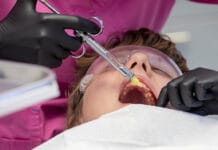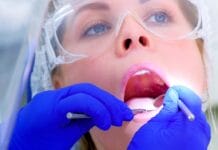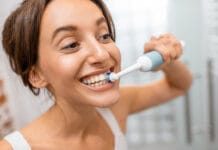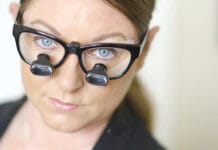The result of a recent study highlights how a structured plaque control intervention can help patients who have desquamative gingivitis. The research, which was published in the International Journal of Dental Hygiene, is titled “Effect of sonic versus manual supervised toothbrushing on both clinical and biochemical profiles of patients with desquamative gingivitis associated with oral lichen planus: A randomized controlled trial.”
About Desquamative Gingivitis
Desquamative gingivitis is a clinical condition where the gingival tissues surrounding the teeth starts to shed, blister, or erode. Patients may also notice lesions forming along their gum line. Sometimes desquamative gingivitis may expand beyond the marginal gingiva and cover the full width of the gingiva.
Desquamative gingivitis is linked to allergies and autoimmune diseases. Patients presenting with desquamative gingivitis may have lupus erythematosus, mucous membrane pemphigoid, erythema exsudativum multiforme, or pemphigus vulgaris. Serious illnesses such as Crohn’s disease, Leukemia, and Sarcoidosis can also cause patients to get desquamative gingivitis.
About the Randomized, Parallel-Design Clinical Trial
The purpose of the study was to examine the effectiveness of an intensive plaque control program with sonic and manual toothbrushes for patients with desquamative gingivitis. The study was orchestrated by a team of scientists led by Laura Bianco. Federica Romano, Loretta Bongiovanni, and Mario Aimetti contributed to the project. Other scientists who participated in the research were Paolo Giacomo Arduino, Marina Maggiora, Elena Curmei, and Nicoletta Guzzi.
For the study, the scientists decided to use a randomized, parallel-design clinical trial with 32 patients. The patients showed signs of desquamative gingivitis and oral lichen planus. Sixteen patients were randomly assigned to a test group while the other half were in the control group. The test group was instructed to use a sonic-powered toothbrush while the control group used a soft-bristle manual toothbrush.
Once the patients were assigned to the two groups, the researchers enrolled them in an eight-week intensive control program. During this time period, the dentists polished the participant’s teeth and performed supragingival scaling. They also demonstrated to the participants how they should brush their teeth and provided other oral hygiene tips.
Bianco and the other researchers measured a variety of dental parameters at the beginning and end of the eight-week study to measure its success. Two of the parameters they looked at were MMP-1 and MMP-9 GCF levels. They also analyzed the effectiveness of a sonic toothbrush versus a manual one to see if it helped reduce the plaque or desquamative gingivitis.
Results of the Study
At the end of the study, the scientists asked the participants if they experienced any pain in their mouth where their lesions were located while brushing their teeth. They found that participants in the test group who used a sonic-powered toothbrush showed a more significant decrease in clinical indices. This also displayed better mucosal disease scores and GCF levels of MMP-1 and MMP-9. The lesions in both groups healed at the same rate.
Based on these findings, the researchers believe the clinical trial revealed that supervised toothbrushing and oral hygiene tips from dental professionals dramatically improved the oral health of patients with desquamative gingivitis and oral lichen planus. The intensive eight-week program also decreased the amount of bacteria and plaque in their mouths.
In Conclusion
Dental professionals should explain to their patients about the serious health consequences of having desquamative gingivitis. They should also go in detail about how patients can be proactive and use electric toothbrushes to help improve their oral hygiene. Dentists and hygienists can also provide them with extra tips on how patients who currently have desquamative gingivitis can avoid irritating their lesions and recommend potential medical treatments.











